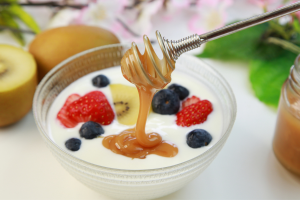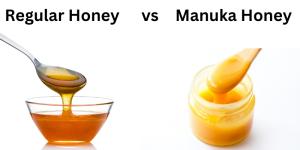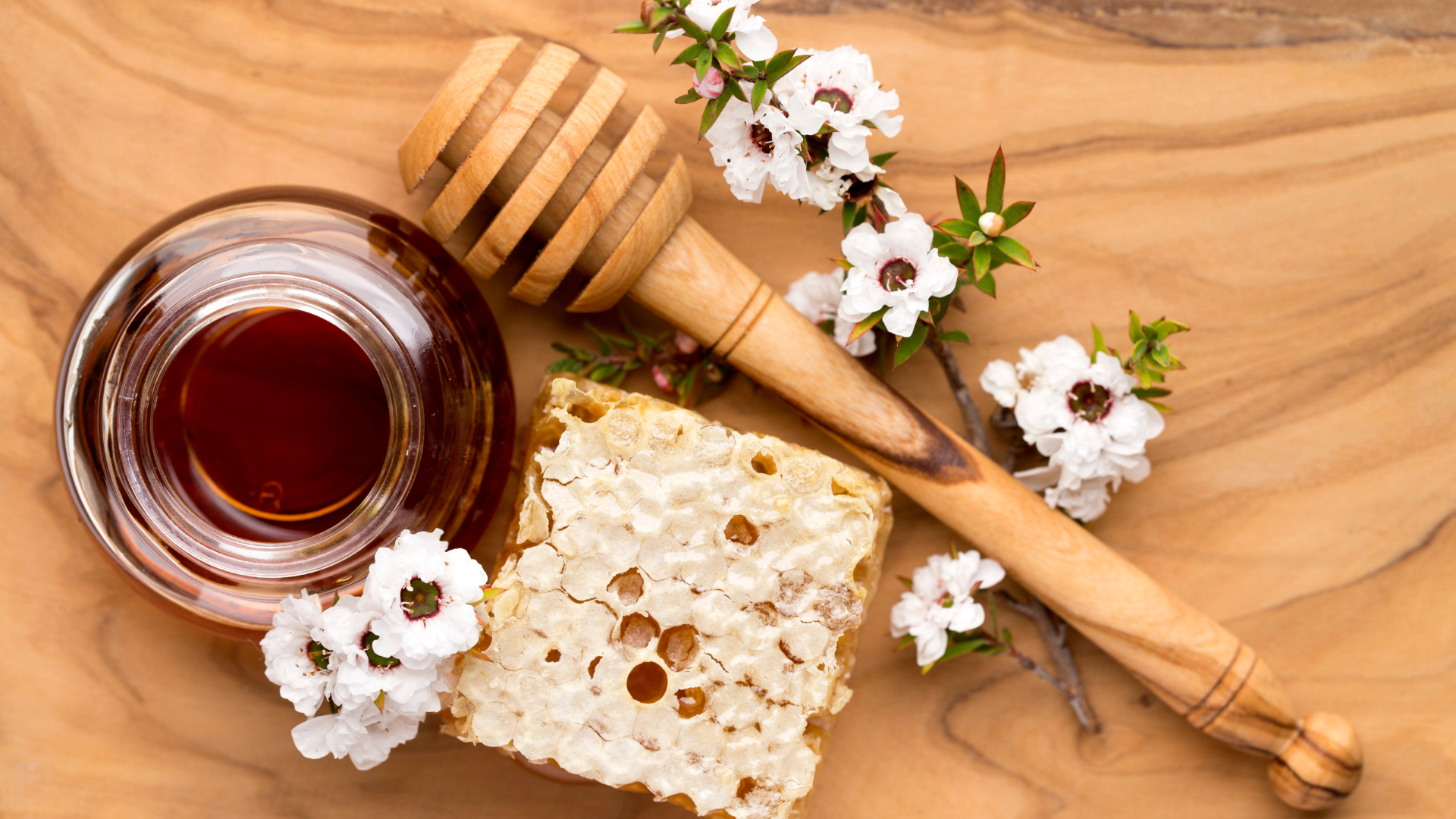There is a rare golden substance only found in the most secluded parts of the world, high in the arid mountains along the sea. This all-natural substance contains powerful anti-microbial properties that can cure a plethora of ailments and illnesses; all while not increasing antibiotic resistance. This energy-rich superfood is known as, manuka honey!
Manuka honey has been used for hundreds of years and its medicinal properties have been well documented in recent decades. This rare honey that hails from New Zealand can only be cultivated under highly specific conditions and only comes from the unique manuka tree. Manuka honey is not your average honey, being classified as a superfood there has been a lot of corruption in the industry and plenty of counterfeits being sold that claim to be manuka honey.
This article will provide you with all the ins & outs about what manuka honey is, what makes it so special, its healing properties, and the complex rating system that seeks to regulate the industry.
Table of Contents:
Manuka Honey History
Healing Properties & Uses
What Makes Manuka Special?
UMF Certification & Rating Systems
Final Thoughts
Manuka Honey History

Manuka honey gets its name from the manuka tree (leptospermum scoparium) that is native to New Zealand and the coastal regions of Australia. Bees drink the special nectar from the manuka tree’s flowers and use it back in their hives and if enough of the manuka nectar is gathered, the bees can make manuka honey.
The Maori discovered the many uses of the manuka tree and referred to it as toanga, meaning “treasure,” and chiefly utilized the tree for medicinal purposes. The manuka trees not only provide special honey, but their leaves and gum can also cure ailments and be used for a variety of purposes.
When European settlers came to the island, they brought with them the European honeybee which has the ability to turn the manuka flower’s special nectar into the rare manuka honey.
Although the manuka tree and its honey have been a staple in medicine among the Maori for generations, it wasn’t until the 1980’s that manuka honey had been studied for its antimicrobial properties and critically acclaimed among doctors in the realm of Western medicine.
Healing Properties & Uses

There are many benefits of manuka honey as it is both anti-bacterial & anti-viral. Simply eating the honey can help relieve sore throats, help battle inflammation, heal oral wounds, relieve coughs & ulcers, aid in digestion simply to name a few.
Manuka honey can even be applied to the skin to help relieve a variety of issues. It can help fight against: acne, dermatitis, eczema and manuka honey can even be used for wound dressing, as it was approved by the US FDA in 2007 for such uses. Some studies have suggested that manuka honey can even help to ease or reduce pain, which is due to its anti-inflammatory action.
Many studies suggest that there is little to no anti-biotic resistance to manuka honey, as it is commonly used to treat drug-resistant bacteria infections.
Manuka honey can also serve as an energy-booster, simply take a spoonful, mix into a smoothie or water, or add the honey to virtually any meal!
What Makes Manuka Special?
Now, all honey is anti-bacterial and is healthy to eat, so why is manuka so special? If we dive into the chemical structure of manuka honey we can crack the secrets to its healing properties.
The driving force behind manuka honey’s (and honeys in general) anti-bacterial qualities is hydrogen peroxide, but manuka honey also contains a special compound known as methylglyoxal (MGO). When honey is being processed for human consumption, it is heated and many of the anti-bacterial qualities are significantly weakened; however, manuka honey’s MGO is able to survive the heating process and retain its high anti-biotic power.
In addition to MGO, manuka honey contains leptosperin and dihydroxyacetone (DHA) which are important indicators of manuka honey quality, as explained in the follower section.
UMF Certification & Rating Systems

Not all manuka honey is created equal and it is important to fully research whichever brand you would like to use and make sure to note two key certifications to make sure you get the highest quality possible (and at least get genuine manuka!).
Remember from above, for bees to make actual manuka honey they need enough of the manuka flower nectar. It is possible for bees to use manuka nectar and nectar from other plants, thus lowering the grade of honey and allowing it to be more generic without all of the amazing healing qualities of manuka.
The main rating system for manuka honey has been created by an independent organization back in the 1990’s and is still used today known as, Unique Manuka Factor (UMF). Their rating system principally uses three main compounds in manuka honey to test & see if it is indeed “manuka” or a counterfeit. They use: 1. leptosperin, 2. MGO, and 3. DHA and test for the amounts of each compound in manuka.
Depending on how much of each compound is in manuka honey, UMF then applies a numerical rating that offers a general sense of the benefits that can be received, as detailed below:
UMF 5+ & 10+ = Very low medicinal properties, but tastes the sweetest and good natural food & energy booster.
UMF 15+ = This is where the medicinal properties start to kick in but provides a balance between health & wellness and taste.
UMF 20+ = Medicinal properties are strong and the taste becomes more bitter (higher MGO makes for more bitterness).
UMF 25+ = The highest level provides the most medicinal support & healing properties, the honey is not as sweet tasting as the lower levels.
There is another school of thought when it comes to measuring manuka honey quality and that is simply testing for the amount of MGO in the honey. The higher the amount, the higher the quality and the medicinal strength.
Final Thoughts
Manuka honey is an incredible superfood with well documented healing qualities. There are a few things to consider before going out and purchasing your own bottle though. The industry faces few regulations in regards to claims about manuka honey authenticity, so it is important to choose brands that use both UMF and MGO ratings and that are transparent; in order to avoid counterfeit products.
In regards to which UMF & MGO rating is the best bang for your buck, personally I wouldn’t recommend anything under UMF 15+ as good old fashioned honey can do the trick at lower levels. UMF 15+ is great to start receiving the medicinal benefits, while also balancing taste & budget. A UMF 20+ is recommend for the therapeutic properties, and at that point you should not necessarily need a UMF 25+, as the UMF 20+ can deliver a significant amount of benefits.
If you enjoyed this article you can check out more in the Blog and continue to come back for more as they are made available. You can also follow us on Facebook @safesolutionsinc or on Instagram @safesolutions we always make sure to post new articles that have been uploaded to the Blog, so you won’t miss the next one!
Thanks for reading!
-Gage




